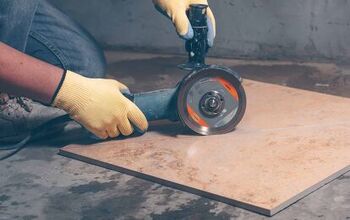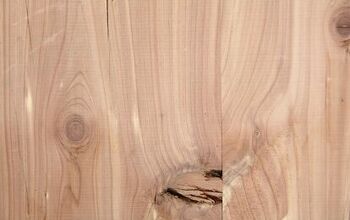Does Porcelain Tile Need To Be Sealed?

The question of sealing or not sealing porcelain is becoming one of the most frequently asked questions among purchasers of this type of tiling. While we all understand that natural products such as timber, marble or stone require some form of sealing, what about porcelain tiles?
This question is actually a little more complicated than it may seem. In the past, porcelain had such a low rate of water absorption that did not necessitate sealing. However, the question nowadays requires a little bit more information to answer.
In most cases, your porcelain tiles do not need to be sealed. That said, some porcelain tiles have high water absorption rates and will require a light layer of sealing to prevent water damage. You can perform a test by pouring some hot water onto the tiles and waiting several minutes to see is any staining appears.
In order to determine whether or not your particular porcelain will benefit from applying a sealer, you can perform a very simple water test. We’ll explain exactly how to achieve this and point you in the direction of the proper sealers, in the instance that you need one.
Do You Need Tile and Grout Cleaning?
Get free, zero-commitment quotes from pro contractors near you.

What is Porcelain Tile?
The porcelain we know and love today was first developed in Italy and constructed using a blend of high-quality clay. It is a kiln-fired product that is baked under incredibly high heat, making it very durable and virtually impervious to liquid stains.
The porcelain or china clays used in its development have a very high silica content that, when fired, provides all of the characteristics of silica. The overall hardness, high chemical resistance, high resistance to abrasion and low water absorption of porcelain is all thanks to silica.
According to European standards, the water absorption of porcelain was determined to be less than 0.5% and, in many cases, even lower than 0.1%. This insanely low water absorption rate along with the way the clay was milled and fired at over 1200 degrees Celsius, resulted in porcelain that did not necessitate sealing.
However, this isn’t the end of the story. Many types of porcelain found today are susceptible to liquid absorption and will therefore benefit from a sealer application.
Does Porcelain Tile Need Sealing?
If this question would have been posed at porcelain’s onset, the answer would have been “no.” In the past, porcelain was manufactured solely in Europe by a small group under very particular performance standards. This was where the definition of porcelain was born but it has since been altered.
With the different varieties of porcelain, manufactured in diverse countries with varying standards, it can be difficult to determine which assortments require sealing. To know which do, you’ll need to obtain more information about the particular porcelain. For example, the many porcelains of today have a much higher rate of water absorption and are hence recommended to be sealed.
If you’re purchasing shiny, highly glazed porcelain tiles, this is a good indication that the tiles have already been sealed. Whereas, a flat matte variety may or may not have been. Regardless, you’ll want to know for sure.
In order to determine if your porcelain necessitates sealing, you can perform a water test. Examine how water is absorbed into the tiles and if it absorbed after a few minutes, it is susceptible to staining and will need to be sealed. You’ll most often see this in polished porcelain products and satin or “honed” materials.
Why Seal Porcelain Tiles?
The primary reason for needing to seal porcelain tiles has to do with the area where it is being installed. When you’re wondering whether or not you need sealed tile, consider if this particular location will be susceptible to moisture concerns or staining.
Sealing is absolutely crucial for floor tiles, as dirt and grime will get set into the tile when not sealed appropriately. It is also important to seal tiles that will be in areas that experience high levels of moisture, such as the bathroom. Additionally, the oil and grease that your kitchen comes into contact with makes it the ideal place for sealed porcelain tiles.
If you are installing porcelain tiles in places of the home where they will be purely decorative and always dry, you may be able to get away without any sealant. Also, if the tile is darker in color, this will make concealing stains much easier.
Which Sealers for Porcelain Tiles?
Porcelain’s very distinctive structure can make it a challenging product when it comes to sealing. With its typically low water absorption and very fine crushed crystal framework, conventional sealers can have difficulty bonding to the surface. Therefore, there are only two types of sealers that will be effective in protecting porcelain:
1. Penetrating Sealers or Impregnators
These types of sealers work beneath the surface of the tile, creating a stain-resistant shield directly below the surface. They will generally leave the tile looking natural and will have no undesirable effect on the tile surface.
Consider a company like Aqua Mix for their sealers that are specifically developed for porcelain.
2. Floor Finishes or Surface Sealants
In the case of polished porcelain, their dense, hard, smooth surface makes the application of surface sealers almost impossible. This is why it is recommended to implement a penetrating sealing for porcelain.
However, when the surface of your polished porcelain begins to show scratches and general wear, a synthetic polish should be introduced. However, in order to achieve proper bondage, you need to use thermoplastic resins. Without this technology, the average air cured coating will not successfully bond.
How to Seal Porcelain Tile
When it comes to the physical sealing of porcelain tile, it must be done properly to achieve desired results. The top of the porcelain must be sealed prior to grouting, as grout can stain light-color, unsealed porcelain. You can mount the tiles as usual but once they’ve finished setting, use a small paintbrush to apply the sealant to the tops of the tiles.
Avoid getting any of the sealant down into the cracks, as this will tamper with grout installation. After you’ve installed the grout and it has set for two to three days, you can apply a final sealing over both the tiles and the grout.
Additional Porcelain Tile Care
In addition to considering a sealant, there are other steps you can take to ensure that your porcelain tile stays looking fresh for many years to come.
Cleaning Porcelain Tile
Grout soiling, scratches and general wear patterns can develop from the traffic and everyday use of your porcelain tile. In order to minimize any of these adverse effects to your tile or grout, dust, vacuum or sweep on a regular basis to remove soil and dust.
Additionally, you can achieve effective cleaning by using warm water and a nonabrasive sponge on your porcelain tile and grout. To help remove any of the dirt or grime that sweeping, dusting or vacuuming couldn’t remove, implement a neutral cleaner that is formulated for use on porcelain tiling.
Avoid using conventional household cleaners as they can damage the sealer that was applied to protect from staining. This includes avoiding the use of bleach and acidic or alkaline cleaners on your porcelain tile.
Examine the following cleaning methods for specific locations of porcelain tile throughout the home:
- Floor surfaces: Dust and vacuum dirt, sand or grit frequently using a clean, dry dust mop. Use area rugs or mats to help prevent excessive scratching to the tiles and build up or discoloration to the grout.
- Countertops and vanities: To keep these surfaces clean from daily stains, use a pH-balanced cleaning product. Consider using a cleaner that also contains a protector. This will ensure that the surface is cleaned and the grout and sealer are reinforced.
- Bathroom or other wet environments: For everyday maintenance, use a neutral, pH-balanced cleanser in your bathroom or any other environment that experiences moisture. In the bath, or shower, you can use a squeegee after each use to help minimize the build-up of daily stains and soils.
What is the Best Sealer for Porcelain Tiles?
If your porcelain tile is installed in an area that is susceptible to a lot of stains, such as a kitchen, you need a specially formulated stain repellant. “ Sealer’s Choice Gold” and “ Ultra-Solv” by Aqua Mix are excellent products that will seal the porcelain tiles, surrounding grout and won’t alter the look after installation.
Do You Need Tile and Grout Cleaning?
Get free, zero-commitment quotes from pro contractors near you.

Relevant Questions
While many people recommend using a mixture of water and white distilled vinegar for cleaning porcelain tiles, experts advise against it. Vinegar is a highly acidic product and, as previously mention, acidic cleaners can breakdown the sealer on the tiles, making it susceptible to stains and damage.
How can you tell if porcelain tile is glazed?When working with new tiles, you can tell if the porcelain is glazed by examining the underside and side of the tile. If there is glazing, it will only partly cover the edge of the tile and the bottom of the tile will be an entirely different color than the glaze on the surface.

Jessica considers herself a home improvement and design enthusiast. She grew up surrounded by constant home improvement projects and owes most of what she knows to helping her dad renovate her childhood home. Being a Los Angeles resident, Jessica spends a lot of her time looking for her next DIY project and sharing her love for home design.
More by Jessica Stone














![The 10 Best Table Saws - [2022 Reviews & Buyer's Guide]](https://cdn-fastly.upgradedhome.com/media/2023/07/31/9070645/the-10-best-table-saws-2022-reviews-buyer-s-guide.jpg?size=350x220)












